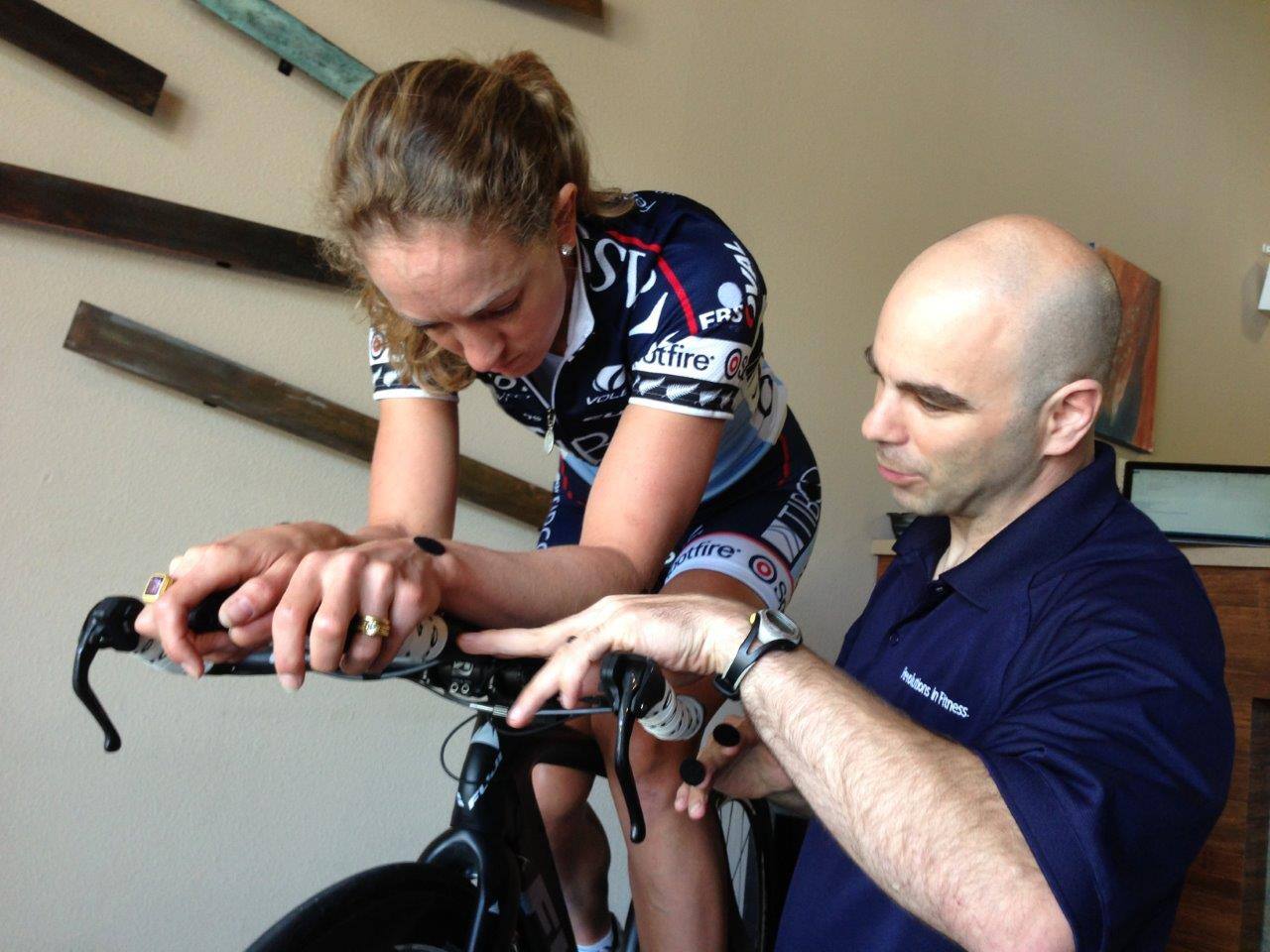How do know if your bike fits you?
These guidelines should help!
When a Cycling Position is Optimal
- You should be comfortable on your bike—don’t wait until you experience pain before seeking help!
- You should feel like you have about 30–40% of your weight on your hands while in your brake hoods and 60–75% on the saddle. If you measured weight distribution, it would be approximately 45% hands / 55% saddle.
- 60–75% of the weight on your saddle should rest on the bony part of your pelvis (ischial tuberosities/rami) with minimal weight on your soft tissues.
- Your elbows should be relaxed and slightly bent (20–30 degrees)—not locked—while keeping your neck relaxed.
- Your back should be nearly flat, not hunched over.
- Your knees should move in a plane parallel to the bike frame. They should not drift closer or farther from the top tube during pedal rotation.
- Your hips should not rock more than ½ to 1 inch side to side.
Some of these requirements depend on factors like flexibility, core stability, and an understanding of good cycling mechanics.
Starting Position Guidelines (A Quick Estimate):
Seat:
- Height: Your knee should be fully extended with your heel on the pedal at maximum reach without your hips dropping, or 0.87 × inseam, measured from the top of the saddle along the seat tube to the center of the bottom bracket.
- Fore/Aft Position: Your knee should be over the pedal spindle with your foot flat and the crank arm horizontal. Assistance may be needed for accuracy.
- Angle: The saddle should be level to prevent sliding forward or excessive pressure from a tilted position.
Cleats:
- Rotation: Cleats should allow your feet to remain in their natural, anatomical position without forcing your knees to twist unnaturally. This positioning is not always symmetrical.
- Fore/Aft Position: The ball of your foot should be positioned over the pedal spindle (center of the pedal).
- In/Out (Q Angle): Adjust cleats relative to the shoe so that your upper and lower leg align in a straight line with your second toe.
Bar Position:
- Reach: Ensure a comfortable position on the brake hoods/shifters with a functional-length stem (8–12 cm) at a slight upward angle.
- Drop: Depends on flexibility, strength, and riding goals.
- For fair flexibility/core stability, the top of the hoods should be 1–2 inches above the saddle.
- For excellent flexibility/core stability, the hoods should be 1–2 inches below the saddle.
These recommendations are general guidelines and may vary significantly based on individual goals, flexibility, strength, core stability, past medical history, and other factors. Always consult a professional bike fitter or medical specialist before making adjustments. Additionally, always mark and measure your current position before making any changes.
By: Curtis Cramblett, PT, CSCS, CFMT, Chair; Medicine of Cycling Bike Fit Task Force & Dave Hopkins, Retul, Specialized Fit Certified

From the founder and CEO- why 15 minutes with us can help you!